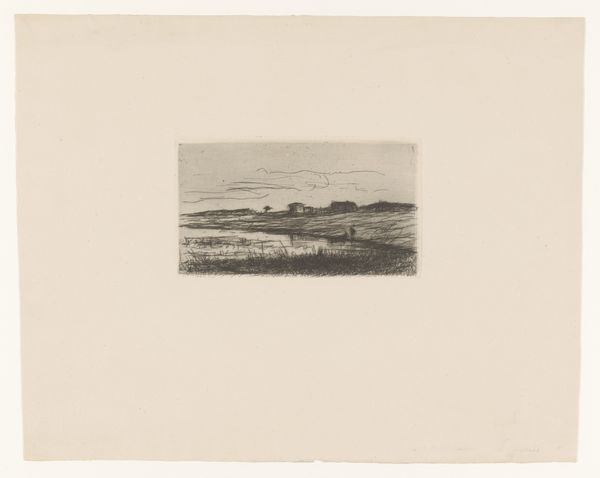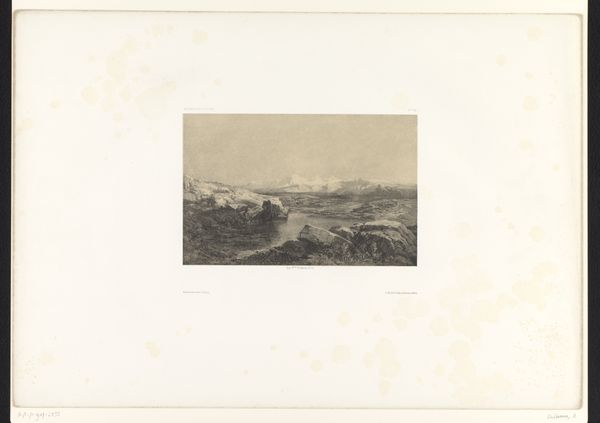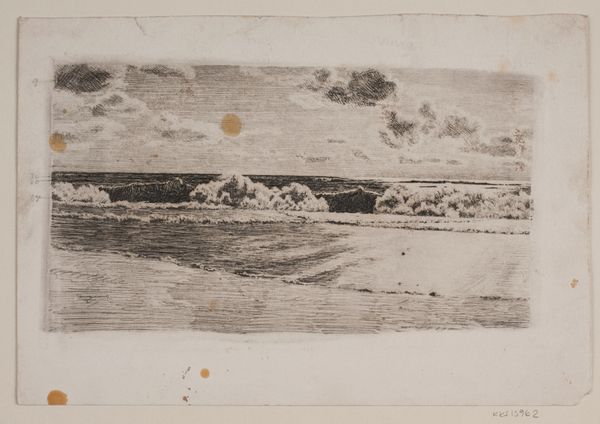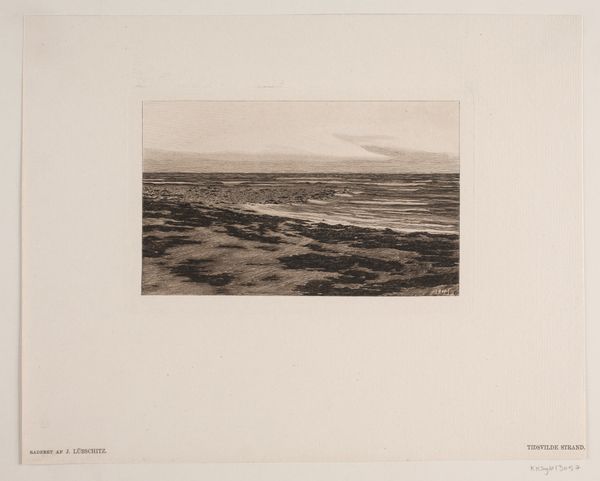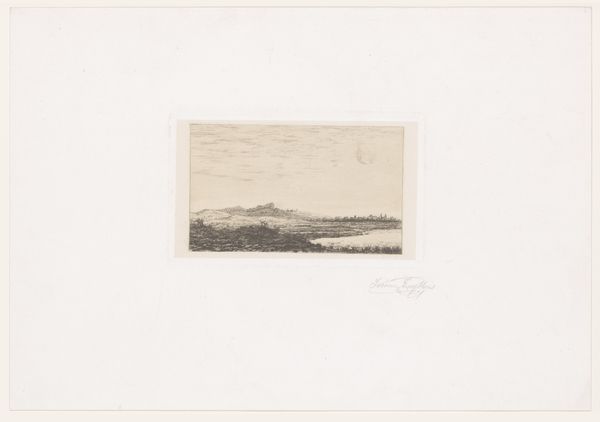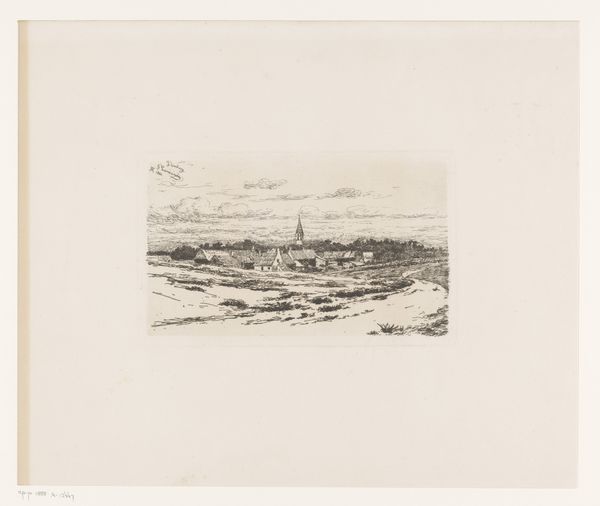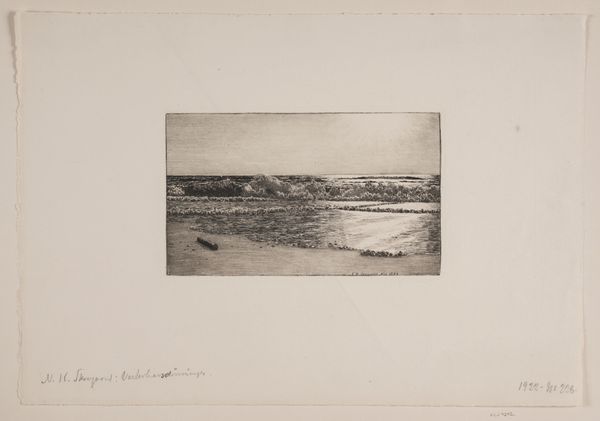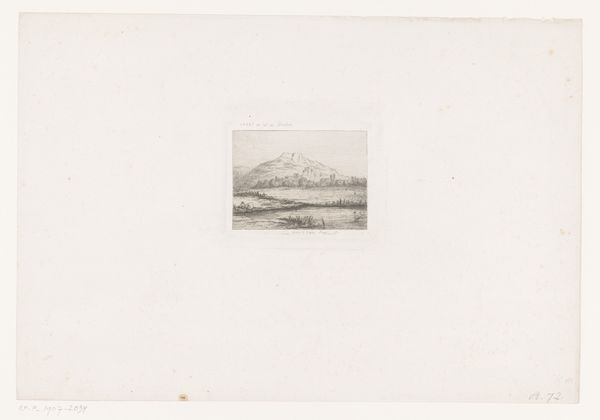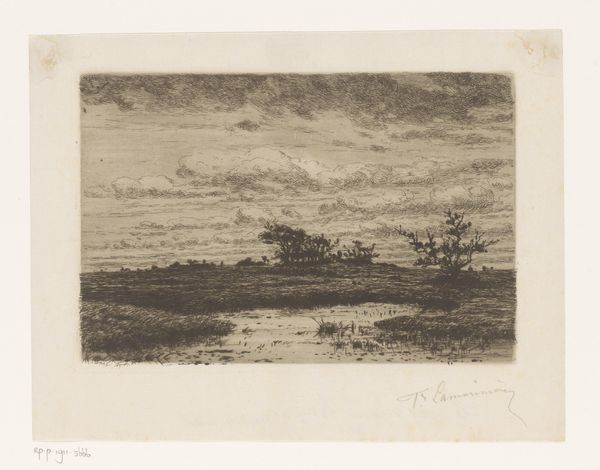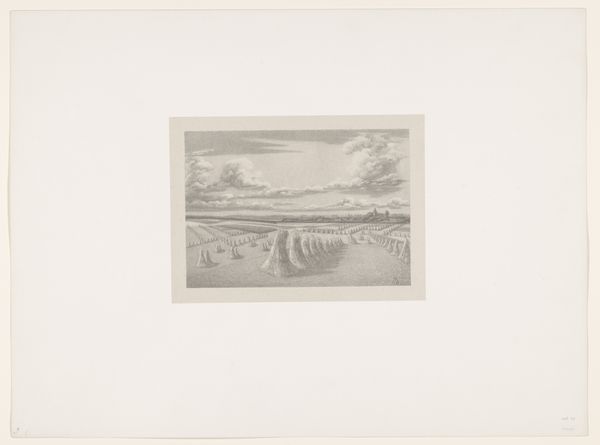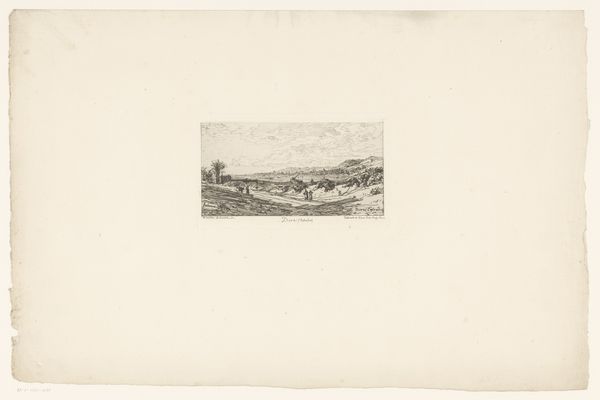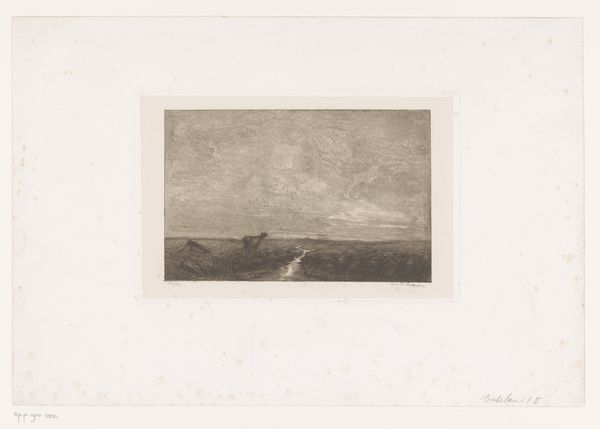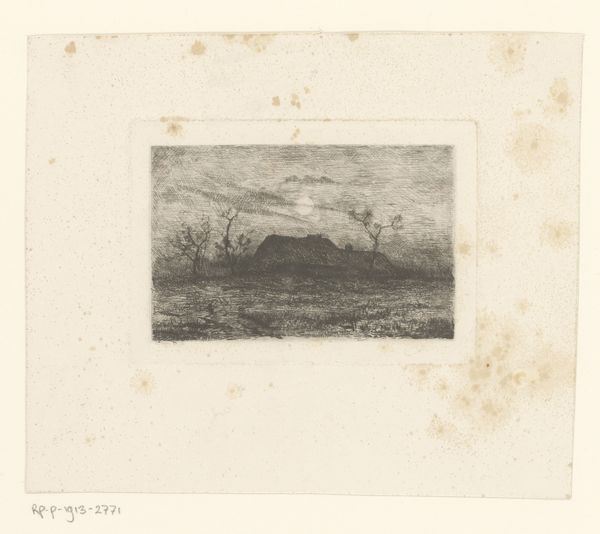
print, etching, paper
#
natural tone
# print
#
impressionism
#
etching
#
light coloured
#
landscape
#
paper
#
road
#
watercolor
#
monochrome
Dimensions: height 209 mm, width 348 mm
Copyright: Rijks Museum: Open Domain
Curator: Before us we have "Moerasland bij het vallen van de avond," or "Marshland at Twilight," an etching by Emile de Baré, likely created sometime between 1865 and 1902. Editor: Immediately, I'm struck by its melancholic mood. The limited tonal range and the heavy use of shadow create this incredible sense of quiet, of a world fading. Curator: Absolutely. Observe how de Baré uses a subtle, yet masterful manipulation of light and shadow to define the compositional space. The horizon line is low, allowing for an expansive sky, almost mirroring the marshland below. Editor: Which makes me think about the process of creating an etching like this. The labour! Consider the copper plate itself, how it's prepared, the time spent scoring those intricate lines. You can almost feel de Baré wrestling with the materiality to capture this transient moment. Curator: And note how the repetitive lines, characteristic of the etching technique, paradoxically construct a scene of remarkable atmospheric nuance. This is not mere depiction, but a formal interpretation of nature's ephemerality. We can also delve into how semiotics work here. For instance, the winding path can represent transition. Editor: Transition indeed, but also physical toil! The path looks well-trodden. Who uses this path? Farmers? Hunters? The work offers an idealized image of rural labor while subtly hinting at its often-unseen struggles, all printed in monochrome to capture an imagined collective memory. The commodification of this landscape into art itself says much. Curator: An astute point. Still, consider how De Baré transforms a commonplace scene through calculated arrangement. Note the distribution of light masses to balance tonal variation, thereby guiding the viewer's eye and enhancing the composition's cohesiveness. It adheres to rigorous principles. Editor: Ultimately, the image feels less about high art aesthetics and more like a social document – it presents us a way of life viewed through the lens of artistic production. Curator: I think examining the interplay between formal structure and potential social narrative gives us rich access into interpreting "Marshland at Twilight". Editor: For me, thinking about the marsh itself – as material, as labor, as lived experience – provides yet another pathway for appreciation.
Comments
No comments
Be the first to comment and join the conversation on the ultimate creative platform.
